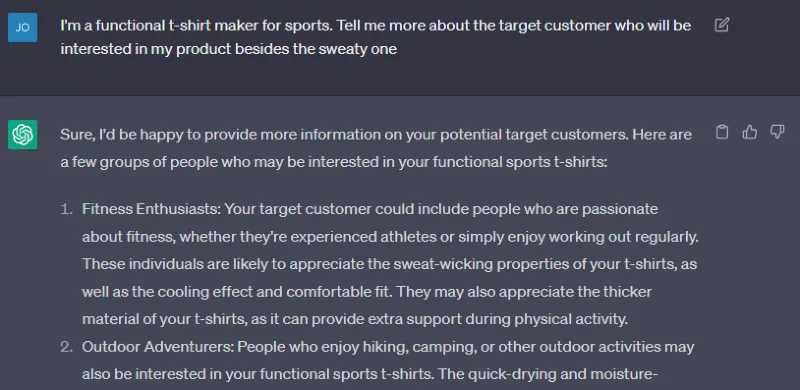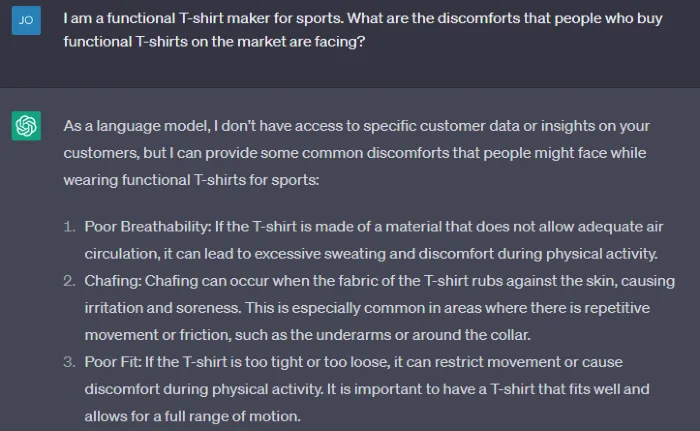Using ChatGPT for Detailed Page Planning and Production

ChatGPT is a generative artificial intelligence (AI) that quickly creates answers to simple questions, as well as reports and papers. Even those who are not in the IT industry or startups may have heard of it.
Last year, just five days after it was launched by the US startup OpenAI, it had already amassed 1 million users, demonstrating its tremendous popularity. Since the beginning of this year, it has gradually been used in many countries around the world and is infiltrating many areas, including content production. Already, video production, content creation, and copywriting tasks using AI are actively taking place.
This article is not simply recommending the use of ChatGPT. It is not even intended as an expert introduction to using ChatGPT for detailed page creation. However, it is prepared for those who do not have a clear idea of how to use ChatGPT in their work or for those who want to create detailed pages more efficiently. As someone who has already used ChatGPT in my work, I will provide tips for using ChatGPT for detailed page creation, along with some small thoughts on whether this massive AI will take over the jobs of content planners like myself.
When you access the ChatGPT site and register, you will be facing a dialogue box. The biggest difference between ChatGPT and conventional search engines is that it is “interactive.” When you start a conversation in the chat box, you will receive answers based on the context of the conversation, as if you were talking to a person. The conversation is recorded and stored according to topic, so you can return later and continue the conversation. Because it responds based on the conversation, you need to ask intelligent questions to get intelligent answers.
If you have only used ChatGPT for simple searches or short-answer questions, you are not using generative AI at all, and that is an understatement. If you decide to use ChatGPT for detailed page creation, please remember the following approach.
Step 1. Establish Context
Before we begin with the actual questions, let’s set the background and situation to establish the context of the conversation. Please let me know who I am and what situation I am in. For example:
Example: I am a marketing content manager for an outdoor brand. I need to create a detailed page for the new functional t-shirt that we are launching.

It is also important to provide product information along with the USP. I will convey the product features that I have and let you know that I am preparing the detailed page for the product.
It’s like asking a content creator to plan a detailed page. The process of customizing learning to provide an appropriate response to the product features that ChatGPT recognizes.
At this stage, even if the answers you hear while setting the context are not satisfactory, do not be too disappointed and continue with your questions. All conversations that are shared at this stage are part of the pre-setup process to obtain more accurate answers.
Step 2. Asking Questions
Once you have established the context, it’s time to ask specific questions using closed commands or directives, rather than open-ended questions.
It’s better to ask specific questions like “Recommend three phrases to use as the main copy for the t-shirt detail page” rather than broad directives like “Give me ideas for the t-shirt detail page.” Using simple verbs to give clear instructions is more helpful for getting the desired response than using complex or difficult words. If you don’t get the answer you want, you can change or refine your question and continue the conversation.
If you were struggling to define the target audience for functional t-shirts, based on this answer, you could have finalized the target for the detail page and set the target persona or planned the content direction.

Also you can also ask about the discomfort that people who are considering purchasing the product may be experiencing.

You can also request a simple market research. However, it may not be based on professional data analysis or the most up-to-date information. As ChatGPT operates based on data from 2021, it may be difficult to conduct market research based on what happened in January 2023.
However, it is possible to utilize ChatGPT to a certain extent for brainstorming.
For example, to explore the pain points of existing customers who purchase functional T-shirts, you would need to search various portals and communities directly, visit the websites of competitors and collect customer feedback by reading reviews.
By utilizing ChatGPT, you can quickly conduct a rough market research and gain ideas.
Step 3. Requesting Content
This may be the most anticipated use case for many people. At the same time, it may be the most feared use case for many professionals in the field. Especially for people like me who make a living by receiving content work requests.
You can ask ChatGPT a question and get results that can be used directly on the detailed page. Request to write key copy, product names, nicknames, hashtag lists to be placed at the bottom of the page, and FAQ question lists.
While the copy provided in the response can be used as is, I recommend using it transformed to match the product and the desired.

There is an important point to remember here. When instructing content requests, use specific condition values such as character count, specific words or concepts that must be included, and the number of desired results.
To avoid hearing completely unrelated answers that differ from what you wanted, it is better to avoid vague questions. It’s a good idea to use specific commands like “Write a key copy of 10 characters or less”, “It would be great if the keyword ‘OO’ is included”, “Recommend 10 hashtags”.
Experience Various AI Technologies
By enhancing the prompt of ChatGPT, a boundless world unfolds. You can use ChatGPT for purposes beyond text, such as providing pictures or showing design references. You can also connect external programs to assist in answering questions.
You can try product names and copywriting that attract searches and inflows, using the keywords provided by Google Trends. And on the AI content creation platform “Copy.ai,” you can generate high-quality texts and images by entering keywords. There are also various platforms where you can experience generative AI, so I hope you find the AI that is most convenient for you and utilize it.
Nevertheless, we still need humans

As the explosive trend and expansion of ChatGPT continues, concerns have also grown. In fact, some countries have banned ChatGPT, and leaders in Silicon Valley and various intellectuals have even signed a petition to stop AI development. However, one thing is clear, it will be difficult to go back to the time when there was no amazing technology like AI.
As artificial intelligence becomes more widespread, even the job of creating detailed pages will soon change. Copywriting, data analysis, and content creation, which have been key skills in content creation, will someday be replaced by AI.
However, instructing AI to create specific content, giving meaning to content generated by AI, and finding exposure to people will remain in the realm of humans.
Moreover, since AI cannot yet perfectly handle detailed page planning and production, content planners who can effectively handle ChatGPT may be able to increase their value for a while.
In fact, there is a trend for platforms to emerge where prompts can be bought and sold, as the quality and accuracy of the results can change depending on ChatGPT’s prompts. There are even rumors that prompt engineers are making the highest daily salary.
Ultimately, the most important thing in the future will be to become a “questioner.” To prepare for the era in which survival depends on asking good questions rather than quick answers and not to lose jobs, we need to start quickly.